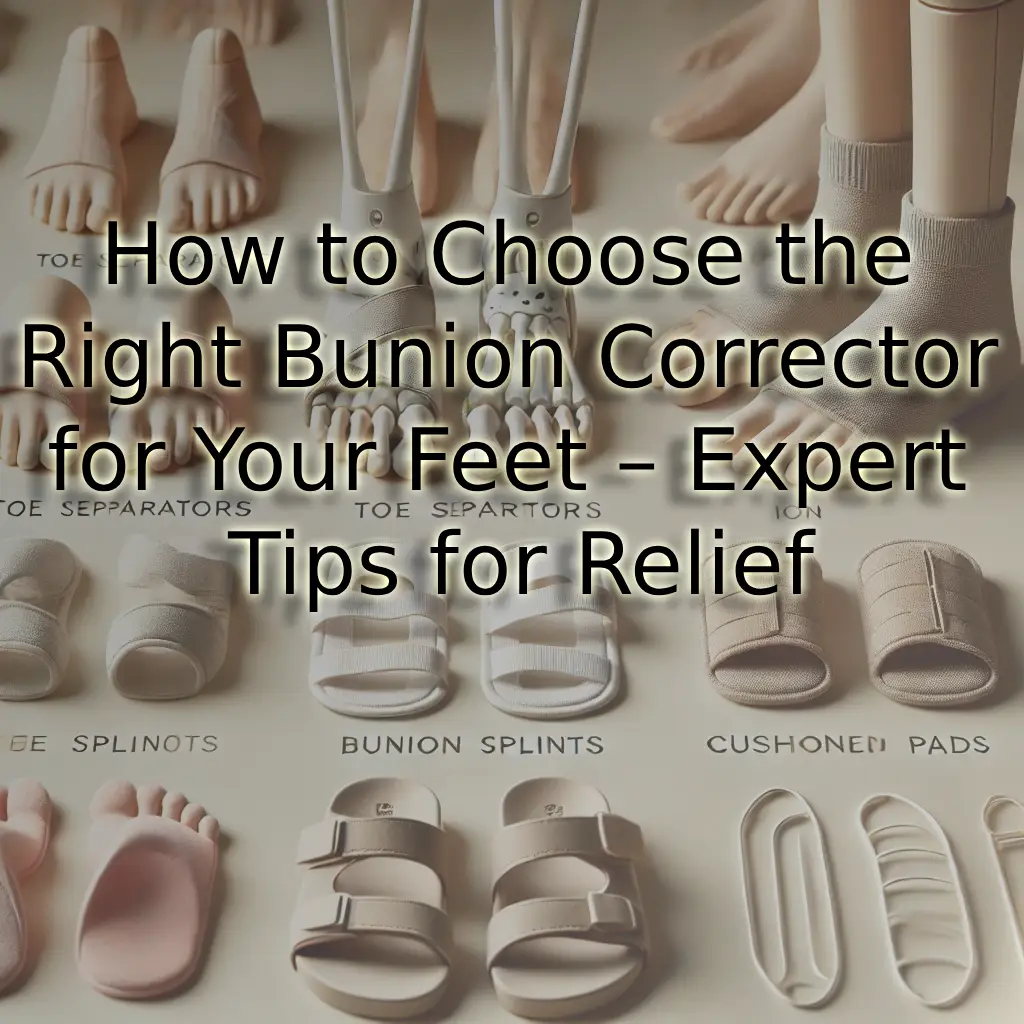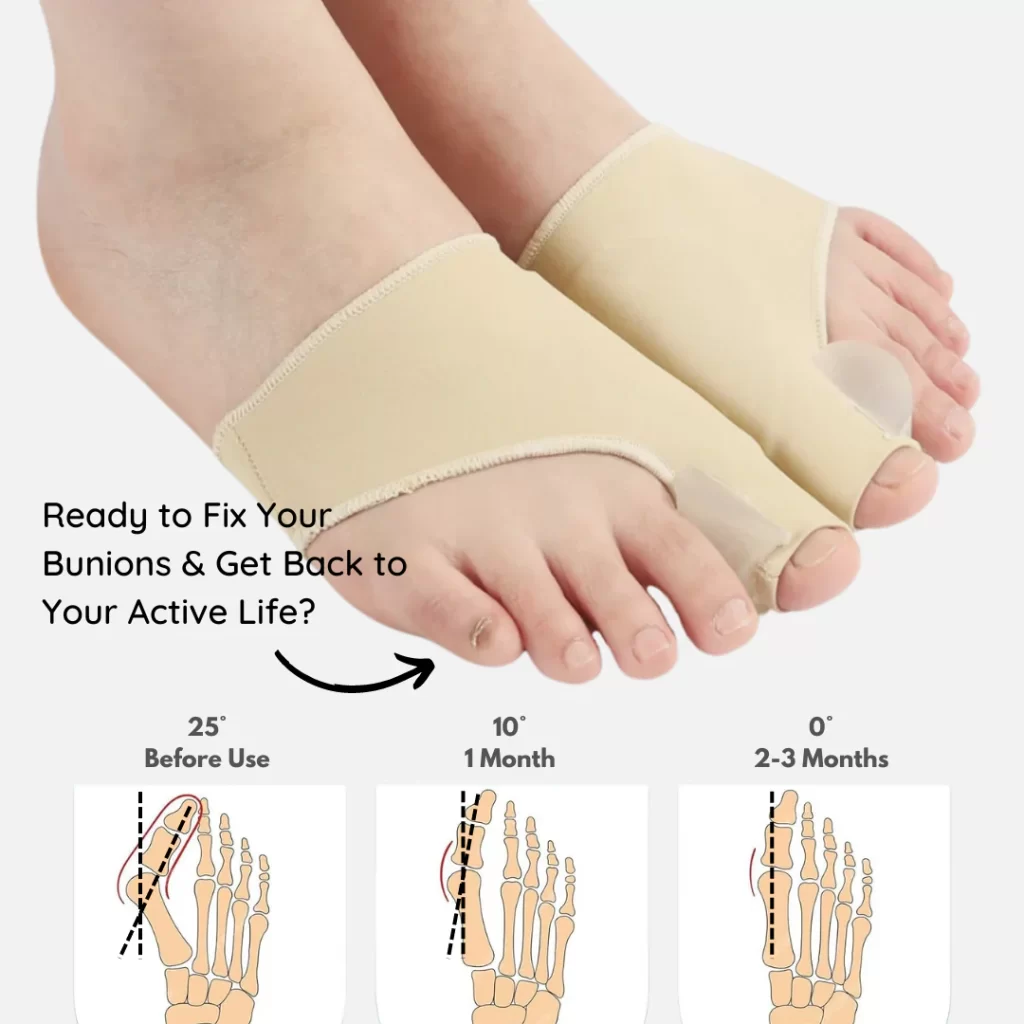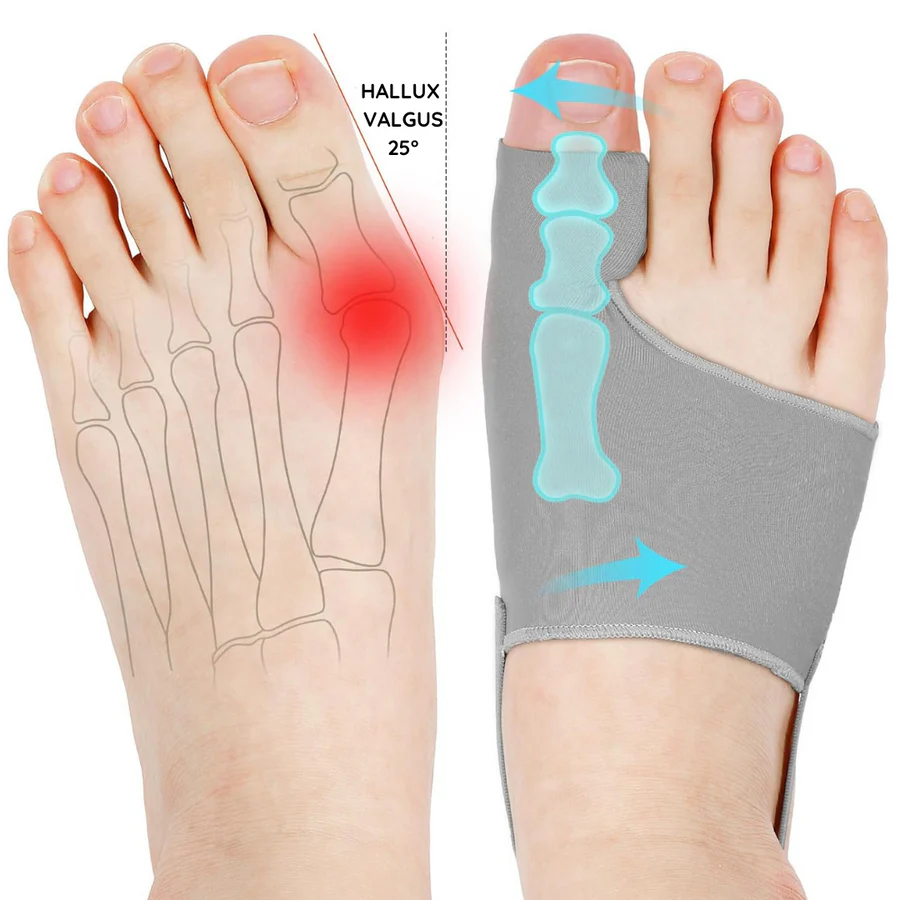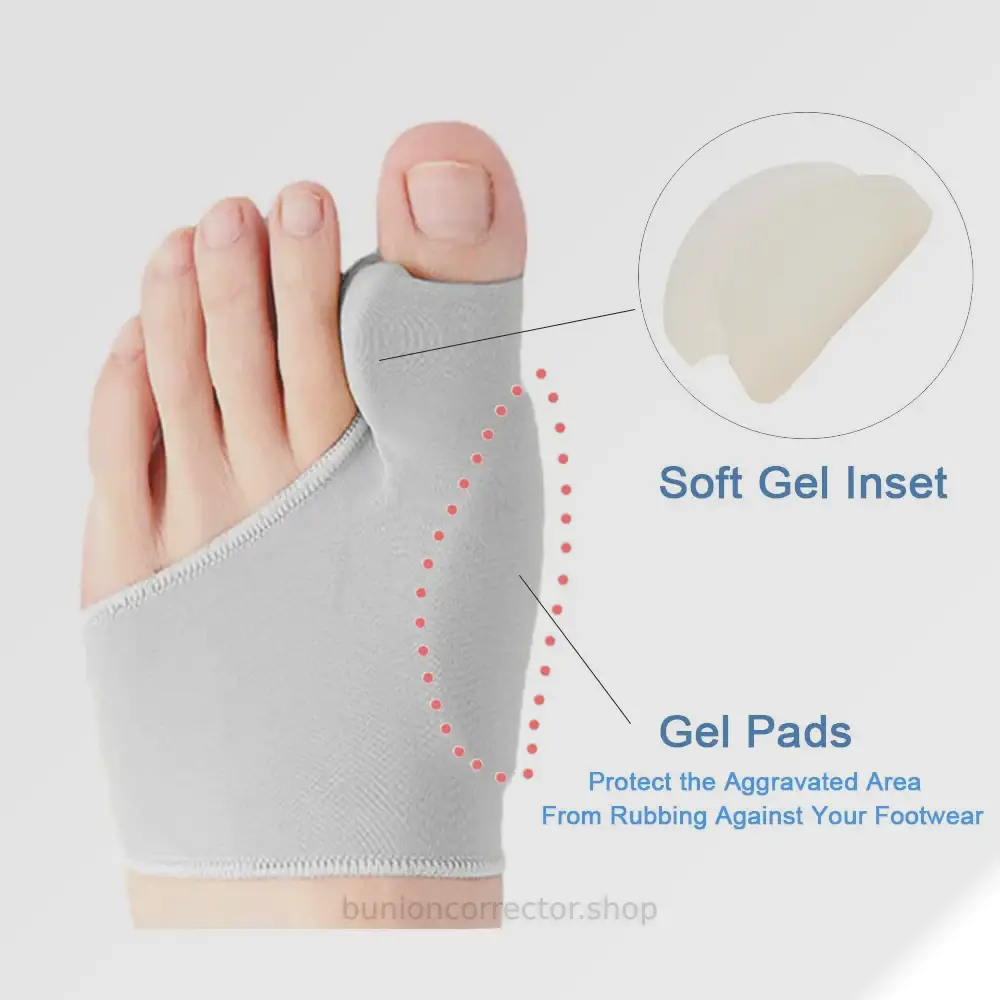Bunions can be a painful and uncomfortable problem that affects the quality of your daily life. Fortunately, bunion correctors are here to provide relief and support. However, with so many options available, choosing the right one can feel overwhelming. Don’t worry! This guide will help you understand the different types of bunion correctors and how to choose the right one for your feet.

What is a Bunion?
Before diving into the selection process, it’s important to understand what a bunion is. A bunion is a bony bump that forms at the base of your big toe, causing the toe to lean toward the others. This misalignment creates pressure, leading to pain, swelling, and discomfort. Bunions can result from genetics, wearing tight shoes, or foot structure abnormalities. While surgery is an option for severe cases, many people find relief through non-surgical treatments like bunion correctors.
Why Use a Bunion Corrector?
Relieve Pain and Discomfort
Bunion correctors are designed to alleviate the pain caused by the misalignment of the toes. By gently realigning the big toe and providing support to the joint, bunion correctors reduce pressure and inflammation, offering much-needed relief.
Prevent Worsening of the Bunion
While bunion correctors can’t permanently “cure” bunions, they can prevent the condition from worsening. By wearing a corrector regularly, you can slow the progression of the deformity, reducing the need for surgery down the line.
Improve Foot Function
When your toes are properly aligned, your overall foot function improves. This can make walking, standing, and even exercising less painful, allowing you to move more freely and comfortably.
Types of Bunion Correctors
Not all bunion correctors are created equal, and different types are designed to address different needs. Here’s a breakdown of the most common types:
1. Toe Separators
Toe separators are simple devices that fit between your toes to keep them from rubbing against each other. Made from soft, flexible materials like silicone, these separators are ideal for people who experience irritation and swelling due to bunions. They’re lightweight and easy to wear inside most shoes.
Best For: Mild to moderate bunions, daily wear, and reducing friction between toes.
2. Bunion Splints
Bunion splints are more rigid devices designed to keep your toe straight and in place. These splints are often used at night to help reposition the toe while you sleep. They offer more support and control than toe separators, making them a good option for more severe cases of bunions.
Best For: Moderate to severe bunions, nighttime use, and realigning the toe.
3. Bunion Pads or Cushions
Bunion pads are soft, cushiony materials that fit over the bunion to protect it from rubbing against the inside of your shoe. These pads provide immediate relief from pain and discomfort, but they don’t do much to correct the alignment of your toes.
Best For: Pain relief, daily wear, and protecting the bunion from shoe friction.
4. Orthopedic Shoes or Insoles
Sometimes, the solution to bunion pain lies in the shoes you wear. Orthopedic shoes or insoles are specially designed to provide extra arch support and cushioning, helping to alleviate pressure on the bunion. While they don’t correct the alignment of your toes, they can prevent the condition from worsening and provide relief from pain.
Best For: Daily wear, people who stand or walk a lot, and long-term pain management.

How to Choose the Right Bunion Corrector
Now that you know the types of bunion correctors available, how do you choose the right one? Here are a few key factors to consider:
1. Severity of Your Bunion
The first step in choosing the right bunion corrector is to assess the severity of your bunion.
- Mild to Moderate Bunions: If your bunion is in the early stages and you’re looking to prevent it from getting worse, a simple toe separator or bunion pad may be enough.
- Moderate to Severe Bunions: For more advanced cases, a bunion splint that can help realign the toe is often a better choice.
2. Comfort and Fit
Comfort is key when selecting a bunion corrector. You’ll want to choose a product that feels good on your foot and doesn’t add to your discomfort. Look for correctors made from soft, breathable materials, especially if you plan to wear them for long periods.
3. When and Where You’ll Be Wearing It
Consider your lifestyle and when you’ll be using the bunion corrector.
- Daytime Use: If you need a corrector you can wear during the day, choose a device that fits comfortably inside your shoes, such as toe separators or bunion pads.
- Nighttime Use: If you’re looking for something to wear while you sleep, a bunion splint may be a better option since it provides more support but may not fit comfortably in shoes.
4. Material and Durability
Since you’ll likely be wearing your bunion corrector frequently, it’s important to choose one that’s made from high-quality, durable materials. Silicone is a popular choice for toe separators because it’s flexible and long-lasting. For bunion splints, look for a product that’s sturdy but not too rigid, so it doesn’t cause additional discomfort.
5. Ease of Use
Some bunion correctors are easier to use than others. Toe separators and bunion pads are typically very easy to slip on and off, making them convenient for daily wear. Bunion splints may require a bit more effort to put on, but they offer more comprehensive support.
6. Price
Bunion correctors come in a range of prices, from budget-friendly options to more expensive, high-end models. While it’s important to choose a corrector that fits your budget, remember that quality matters. A well-made bunion corrector may cost more upfront, but it’s likely to last longer and provide better relief.

Additional Tips for Bunion Care
While bunion correctors can help alleviate pain and discomfort, there are additional steps you can take to care for your feet:
- Choose Proper Footwear: Wear shoes that are wide in the toe box and offer plenty of room for your toes to move. Avoid high heels and narrow shoes that put pressure on the bunion.
- Stretch Your Feet: Regularly stretching and exercising your feet can help improve flexibility and reduce discomfort.
- Ice the Bunion: If your bunion becomes inflamed, applying ice can help reduce swelling and pain.
Conclusion
Choosing the right bunion corrector can make a big difference in managing bunion pain and discomfort. By considering factors such as the severity of your bunion, comfort, fit, and when you’ll be wearing the corrector, you can find the perfect solution for your feet. Remember, bunion correctors are just one part of your overall foot care routine. Combining the corrector with proper footwear, stretching, and other care methods will help you live a more comfortable, pain-free life.

If you’re ready to find the right bunion corrector for your needs, be sure to explore our selection at BunionCorrector.shop, where we offer the world’s No.1 high-quality, comfortable, and durable bunion correctors!